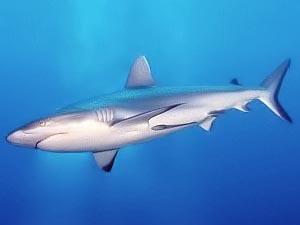Portal:Ecology
| |
|
|
Ecology
|
|
Ecology (from Ancient Greek οἶκος (oîkos) 'house', and -λογία (-logía) 'study of') is the natural science of the relationships among living organisms, including humans, and their physical environment. Ecology considers organisms at the individual, population, community, ecosystem, and biosphere levels. Ecology overlaps with the closely related sciences of biogeography, evolutionary biology, genetics, ethology, and natural history. Ecology is a branch of biology, and is the study of abundance, biomass, and distribution of organisms in the context of the environment. It encompasses life processes, interactions, and adaptations; movement of materials and energy through living communities; successional development of ecosystems; cooperation, competition, and predation within and between species; and patterns of biodiversity and its effect on ecosystem processes. Ecology has practical applications in conservation biology, wetland management, natural resource management (agroecology, agriculture, forestry, agroforestry, fisheries, mining, tourism), urban planning (urban ecology), community health, economics, basic and applied science, and human social interaction (human ecology). The word ecology (German: Ökologie) was coined in 1866 by the German scientist Ernst Haeckel. The science of ecology as we know it today began with a group of American botanists in the 1890s. Evolutionary concepts relating to adaptation and natural selection are cornerstones of modern ecological theory. Ecosystems are dynamically interacting systems of organisms, the communities they make up, and the non-living (abiotic) components of their environment. Ecosystem processes, such as primary production, nutrient cycling, and niche construction, regulate the flux of energy and matter through an environment. Ecosystems have biophysical feedback mechanisms that moderate processes acting on living (biotic) and abiotic components of the planet. Ecosystems sustain life-supporting functions and provide ecosystem services like biomass production (food, fuel, fiber, and medicine), the regulation of climate, global biogeochemical cycles, water filtration, soil formation, erosion control, flood protection, and many other natural features of scientific, historical, economic, or intrinsic value. (Full article...) Selected article - Bioplastics are plastic materials produced from renewable biomass sources, such as vegetable fats and oils, corn starch, straw, woodchips, sawdust, recycled food waste, etc. Some bioplastics are obtained by processing directly from natural biopolymers including polysaccharides (e.g., starch, cellulose, chitosan, and alginate) and proteins (e.g., soy protein, gluten, and gelatin), while others are chemically synthesised from sugar derivatives (e.g., lactic acid) and lipids (oils and fats) from either plants or animals, or biologically generated by fermentation of sugars or lipids. In contrast, common plastics, such as fossil-fuel plastics (also called petro-based polymers) are derived from petroleum or natural gas. One advantage of bioplastics is their independence from fossil fuel as a raw material, which is a finite and globally unevenly distributed resource linked to petroleum politics and environmental impacts. Life cycle analysis studies show that some bioplastics can be made with a lower carbon footprint than their fossil counterparts, for example when biomass is used as raw material and also for energy production. However, other bioplastics' processes are less efficient and result in a higher carbon footprint than fossil plastics. (Full article...)Selected image - Credit: Andrew Dunn (User:Solipsist) General imagesThe following are images from various ecology-related articles on Wikipedia.
Related WikiProjectsThings you can do
Entries here consist of Good and Featured articles, which meet a core set of high editorial standards.
 Countershading, or Thayer's law, is a method of camouflage in which an animal's coloration is darker on the top or upper side and lighter on the underside of the body. This pattern is found in many species of mammals, reptiles, birds, fish, and insects, both in predators and in prey. When light falls from above on a uniformly coloured three-dimensional object such as a sphere, it makes the upper side appear lighter and the underside darker, grading from one to the other. This pattern of light and shade makes the object appear solid, and therefore easier to detect. The classical form of countershading, discovered in 1909 by the artist Abbott Handerson Thayer, works by counterbalancing the effects of self-shadowing, again typically with grading from dark to light. In theory this could be useful for military camouflage, but in practice it has rarely been applied, despite the best efforts of Thayer and, later, in the Second World War, of the zoologist Hugh Cott. (Full article...)Selected biography -Edward Smith Deevey Jr. (3 December 1914 – 29 November 1988), born in Albany, New York, was a prominent American ecologist and paleolimnologist, and an early protégé of G. Evelyn Hutchinson at Yale University. He was a creative pioneer in several areas, including quantitative palynology, cycling of natural isotopes, biogeochemistry, population dynamics, systematics and ecology of freshwater zooplankton, and he promoted the use of life tables in ecology. In 1938, Deevey received his Ph.D. in Zoology from Yale University as a student of Hutchinson. He taught at Yale from 1946 to 1968. In 1971, he became curator of paleoecology at the Florida Museum of Natural History and a research professor at the University of Florida, where he remained until the time of his death. (Full article...)Did you know (auto-generated)
Selected quote -
Ecology news
Additional News Highlights
Selected publication -Conservation and Society is a peer-reviewed scientific and social science journal, which is published on a quarterly basis. It is interdisciplinary in scope. The editor in chief is Kamaljit Bawa (University of Massachusetts). The journal was established in 2003. Prior to 2005 the frequency of publication was semiannual. (Full article...) Related portalsMore did you know -Related articlesAssociated WikimediaThe following Wikimedia Foundation sister projects provide more on this subject:
Web resources
Discover Wikipedia using portals |















































